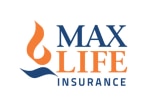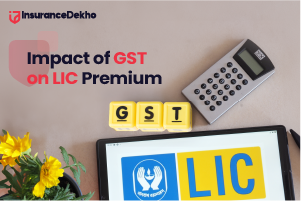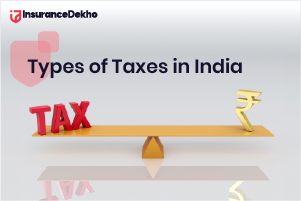Section 115BAC: Features of the new tax regime and its benefits
Updated On Feb 14, 2024
Table of Contents
- What is Section 115BAC – the New Tax Regime?
- What are the tax rates under the new regime?
- The Eligibility Criteria for the New Tax Regime under Section 115BAC
- Exemptions and Deductions Not Claimable Under the New Tax Regime
- Exemptions and Deductions Available Under the New Tax Regime
- Can I Choose Between the New Tax Regime and the Existing Regime?
- How Do I Choose the New Regime and Plan My Tax?
- House Property Loss Under the New Tax Regime
- Deductions Not Allowed Against Business Income Under the New Regime
- Unabsorbed Depreciation and Business Loss Under the New Regime
- Benefits of the New Tax Regime
- Conclusion
- FAQs on Section 115BAC and the New Tax Regime
What is Section 115BAC – the New Tax Regime?
Section 115BAC is a newly introduced provision in the Income Tax Act of India, offering an alternative tax regime to individual taxpayers and Hindu Undivided Families (HUFs). It represents a significant shift in the approach to income tax, aimed at simplifying the tax structure. Here's what it entails:
- Overview: Under Section 115BAC, taxpayers have the option to choose a new tax regime that offers lower tax rates across various income slabs but with a catch – fewer deductions and exemptions.
- Tax Slabs and Rates: The new regime introduces revised tax slabs with reduced rates. For example, income up to ₹2.5 lakhs is tax-exempt, while income between ₹2.5 lakhs to ₹5 lakhs is taxed at 5%, and so on, up to a higher income bracket.
- Deductions and Exemptions: One of the key aspects of this regime is the elimination of most commonly availed deductions and exemptions like standard deduction, Section 80C investments, housing loan interest under Section 24(b), etc.
- Flexibility: Taxpayers have the flexibility to choose between the new regime and the existing (old) tax regime every financial year, based on what benefits them more. This choice offers a chance to optimise tax liabilities.
Section 115BAC's new tax regime is designed to ease the tax filing process by doing away with various deductions and offering lower tax rates. It’s a move towards a more streamlined tax system. While it offers potential savings for some, it also necessitates careful consideration of your financial situation.
What are the tax rates under the new regime?
The income tax slabs under the new tax regime have been updated in Budget 2023. The table below displays the new tax slabs and tax rates under the new tax regime for FY 2023–24 (AY 2024–25) and FY 2022–23 (AY 2023–24):
|
New regime tax rates (FY23-24) |
New regime tax rates (FY 22-23) |
||
|
Income Slabs |
Rates |
Income Slabs |
Rates |
|
Up to Rs 3 lakh |
Nil |
Up to Rs.2.5 lakh |
Nil |
|
Rs 3 lakh to Rs 6 lakh |
5% |
Rs 2.5 lakh to Rs 5 lakh |
5% |
|
Rs 6 lakh to Rs 9 lakh |
10% |
Rs 5 lakh to Rs 7.5 lakh |
10% |
|
Rs 9 lakh to Rs 12 lakh |
15% |
Rs 7.5 lakh to Rs 10 lakh |
15% |
|
Rs 12 lakh to Rs 15 lakh |
20% |
Rs 10 lakh to Rs 12.5 lakh |
20% |
|
Income above Rs 15 lakh |
30% |
Rs 12.5 lakh to Rs 15 lakh |
25% |
|
|
|
Income above Rs 15 lakh |
30% |
Below is a comparison of the tax rates for FY 2022–2023 (AY 2023–2024) under the new and old tax regimes:
|
Tax rates under New tax regime 2022-23 |
Tax rates under the Old tax regime 2022-23 |
||
|
Rs 2.5 lakh to Rs 5 lakh |
5% |
Rs 2.5 lakh to Rs 5 lakh |
5% |
|
Rs 5 lakh to Rs 7.5 lakh |
10% |
Rs 5 lakh to Rs 10 lakh |
20% |
|
Rs 7.5 lakh to Rs 10 lakh |
15% |
Income above Rs 10 lakh |
30% |
|
Rs 10 lakh to Rs 12.5 lakh |
20% |
|
|
|
Rs 12.5 lakh to Rs 15 lakh |
25% |
||
|
Income above Rs 15 lakh |
30% |
||
For FY 2023–24 (AY 2024–25), the tax due under both the new and the old regimes, assuming no deductions or exemptions, is as follows:
|
Annual income* |
Tax under the old regime (Rs) |
Tax under the new regime (Rs) |
Tax savings under the new regime (Rs) |
|
Up to Rs 7,50,000 |
65,000 |
31,200 |
33,800 |
|
Up to Rs 10,00,000 |
117,000 |
62,400 |
54,600 |
|
Up to Rs 12,50,000 |
195,000 |
1,04,000 |
65,000 |
|
Up to Rs 15,00,000 |
273,000 |
1,56,000 |
1,17,000 |
*It is assumed that the annual income under the previous and current regimes is after taking the standard deduction into account.
The Eligibility Criteria for the New Tax Regime under Section 115BAC
Understanding the basics of tax laws can be intricate, and understanding who is eligible for the new tax regime under Section 115BAC is a crucial piece of this puzzle. Here are the key eligibility criteria:
- Applicable Taxpayers: The new tax regime under Section 115BAC is available to individual taxpayers and Hindu Undivided Families (HUFs). It offers an alternative to the existing tax system with different tax rates and slab structures.
- Income Source Consideration: The new regime is applicable regardless of the source of income. It covers all heads of income, such as salary, house property, business and profession, capital gains, and other sources.
- Flexibility in Choice: Taxpayers have the option to choose between the new and the old tax regimes each financial year. This choice provides flexibility, allowing taxpayers to opt for the regime that is more beneficial based on their financial and tax planning.
- Business Owners' Criteria: For taxpayers with income from business or profession, the choice of tax regime is locked in for a longer duration. Once they opt for the new regime, they can switch back to the old regime only once, and thereafter, they are locked into the chosen regime for future years as long as they have business income.
- Non-Resident Indians (NRIs): Non-Resident Indians are also eligible to choose the new tax regime. This inclusion ensures that NRIs can benefit from the lower tax rates if it suits their financial profile better.
- Declaration Requirement: To opt for the new tax regime, taxpayers need to declare their choice while filing their income tax returns for the respective financial year.
The new tax regime under Section 115BAC aims to simplify tax calculations and potentially lower tax liabilities for eligible taxpayers. However, the choice between the new and old regimes should be made after careful consideration of one's financial situation, income sources, and tax-saving investments.
Exemptions and Deductions Not Claimable Under the New Tax Regime
One of the key features of the new tax regime under Section 115BAC is the limitation on certain exemptions and deductions which were previously available. Understanding these changes is vital for making an informed decision about which regime to opt for. Here’s a list of major exemptions and deductions that are not claimable under the new regime:
- Standard Deduction: The standard deduction of ₹50,000 for salaried employees and pensioners is not available.
- Section 80C Deductions: Deductions under Section 80C, which cover a range of investments and expenses like life insurance premiums, PPF contributions, and school tuition fees, cannot be claimed.
- Home Loan Interest (Section 24): Taxpayers cannot claim the deduction on home loan interest under Section 24(b), which was available in the old regime.
- HRA (House Rent Allowance) Exemption: The exemption on HRA for salaried individuals paying rent is not permissible.
- Leave Travel Allowance (LTA): LTA exemptions for travel expenses incurred during leave are not applicable.
- Deductions Under Section 80D to 80U: This includes deductions for medical insurance premiums, disability, and certain specified illnesses.
- Exemption for Allowances: Various allowances like transport allowance, education allowance, and others are not exempt.
- Deduction for Entertainment Allowance and Professional Tax: For government employees, these specific deductions are also not available.
- Deduction for Savings Bank Interest: Deduction under Section 80TTA/80 TTB for interest earned on savings bank accounts is not claimable.
- Additional Depreciation: In the case of business income, the claim of additional depreciation is not permitted.
While this new regime simplifies the tax process by doing away with various exemptions and deductions, it's important to evaluate whether opting for it is beneficial based on individual financial situations.
Exemptions and Deductions Available Under the New Tax Regime
While the new tax regime under Section 115BAC limits many exemptions and deductions, there are still some that remain available. Here’s a table outlining these:
|
Exemption/Deduction |
Details |
|
Transport Allowance |
Available only for differently-abled persons, up to ₹3,200 per month. |
|
Conveyance Allowance |
Exemptions for conveyance allowance incurred in the course of performing duties of an office or employment. |
|
Travel Concession or Assistance |
Exemption for any travel concession or assistance received by or due to an individual from his employer for himself and his family. |
|
House Rent Allowance (HRA) |
Exemption for HRA is not available under the new regime. However, if actual rent paid is less than 10% of salary, there is no tax liability on that part. |
|
Standard Deduction on Salary |
Not available under the new regime. |
|
Deduction under Section 80C |
Investments and expenses eligible under Section 80C are not deductible. However, employer's contribution to NPS (National Pension System) up to 10% of salary continues to be deductible. |
|
Deduction for Entertainment Allowance |
Not available for non-government employees. Government employees can claim a deduction up to ₹5,000. |
|
Professional Tax |
Professional tax paid during the year is allowed as a deduction. |
Can I Choose Between the New Tax Regime and the Existing Regime?
One of the most significant aspects of Section 115BAC is the option it gives taxpayers to choose between the new tax regime and the existing (old) regime. Here’s how this choice works:
- Annual Choice for Salaried Individuals and Pensioners: If you are a salaried individual or a pensioner, you have the flexibility to choose between the new and old tax regimes each financial year. This choice allows you to opt for the regime that is more beneficial based on your financial situation, deductions, and exemptions for that particular year.
- Locked-In Choice for Business Income Earners: For individuals with business income, the choice made between the tax regimes is more binding. Once you opt for the new regime, you have only one opportunity to switch back to the old regime in a subsequent year. After returning to the old regime, if you again choose the new regime in any year, you cannot switch back to the old regime as long as you have business income.
- Declaration Requirement: The choice of regime must be declared at the time of filing the income tax return. This declaration is essential as it determines the tax calculation for the respective year.
- Consideration of Deductions and Exemptions: The decision to opt for one regime over the other should be based on a careful evaluation of the deductions and exemptions you are eligible for. The new regime might offer a lower tax rate but eliminates many deductions and exemptions, which might be more beneficial in the old regime.
- Flexibility for Non-Residents: Non-resident Indians (NRIs) also have the option to choose between the two regimes, making it important for them to evaluate their tax liability under both options.
How Do I Choose the New Regime and Plan My Tax?
Choosing the new tax regime under Section 115BAC and planning your tax accordingly involves a few crucial steps. Here's how you can approach it, along with an example:
Steps to Choose and Plan:
- Analyse Your Income Sources: Start by assessing all your income sources, including salary, house property, capital gains, business income, and other sources.
- Calculate Deductions and Exemptions: Understand the deductions and exemptions you usually claim under the old regime. This includes investments under Section 80C, housing loan interest, HRA, etc.
- Compare Tax Liability in Both Regimes: Use an income tax calculator or consult a tax advisor to compare your tax liability under both the new and old regimes. This comparison should factor in the available deductions and exemptions in the old regime versus the lower tax rates in the new regime.
- Make an Informed Decision: Based on this comparison, decide which regime offers you lower tax liability and aligns better with your financial goals.
- Declare Your Choice: While filing your income tax return, declare your choice of the tax regime for that financial year.
Example:
Suppose Ravi, a software engineer, has the following income and deductions:
- Annual Salary: ₹10 Lakhs
- 80C Investments (PF, ELSS, etc.): ₹1.5 Lakhs
- HRA Exemption: ₹1 Lakh
- Interest on Home Loan (Section 24): ₹2 Lakhs
Under the Old Regime:
Taxable Income after Deductions: ₹5.5 Lakhs (₹10 Lakhs - ₹1.5 Lakhs - ₹1 Lakh - ₹2 Lakhs)
Tax Liability: As per old tax slabs
Under the New Regime:
- Taxable Income: ₹10 Lakhs (No deductions)
- Tax Liability: As per new reduced tax slabs
Ravi needs to calculate the actual tax payable in both scenarios and choose the one that results in lower tax liability. If the new regime, despite having no deductions, results in lower tax, it might be beneficial for him.
Remember, this decision can vary each year based on your income and deductions for that year.
House Property Loss Under the New Tax Regime
Under the new tax regime introduced by Section 115BAC, there are significant changes regarding the treatment of house property loss. In the old regime, taxpayers could set off losses from house property (such as interest on home loan) against other heads of income. However, under the new regime:
Set-Off Restriction: The option to set off loss from house property against other income sources is not permitted. This change can impact taxpayers who have rental properties or are paying home loan interest, as these deductions were a significant way to reduce taxable income in the old regime.
Carry Forward of Loss: While the immediate set-off is not allowed, taxpayers can still carry forward the loss for eight subsequent years. However, this loss can only be set off against income from house property in those years.
This change in the treatment of house property loss is a crucial factor to consider when deciding between the new and old tax regimes, especially for those with home loans or rental properties.
Deductions Not Allowed Against Business Income Under the New Regime
The new tax regime also alters the deductions available against business income. Here’s a table outlining these changes:
|
Deduction Type |
Old Regime |
New Regime |
|
Depreciation |
Allowed as per Income Tax rules. |
Not allowed against other income heads; only against business income. |
|
Business Expenditure |
Various business-related expenses are deductible. |
Expenses related to business income are still allowed, but cannot be set off against other income heads. |
|
Carry Forward of Business Loss |
Allowed to be set off against other heads of income. |
Can only be set off against business income in subsequent years. |
|
Investment-related Deductions (Section 80C, etc.) |
Allowed against business income. |
Not allowed under the new re |
This table highlights the key changes in deductions against business income under the new tax regime. For business owners and professionals, it's important to weigh these changes against the potential benefits of the new regime's lower tax rates.
Unabsorbed Depreciation and Business Loss Under the New Regime
Under the new tax regime introduced by Section 115BAC, the treatment of unabsorbed depreciation and business loss has specific considerations. Here's an overview:
Unabsorbed Depreciation:
- Under the new regime, the carry forward of unabsorbed depreciation continues to be allowed. However, it's important to note that it can only be set off against the income from the same business or profession.
- The new regime does not permit the set-off of unabsorbed depreciation against other heads of income, as was possible under the old regime. This change is particularly relevant for businesses with significant capital investments and depreciation.
Business Loss:
- For business losses, while they can still be carried forward under the new regime, the set-off is restricted. Similar to unabsorbed depreciation, business losses can only be set off against profits from the same business or profession.
- The restriction of setting off business loss against other income heads can impact the overall tax liability, especially for businesses experiencing fluctuations in income or losses.
These changes in the treatment of unabsorbed depreciation and business loss under the new tax regime require careful tax planning and consideration, particularly for business owners and professionals. Evaluating the impact of these changes against the potential benefits of lower tax rates is crucial in making an informed choice.
Benefits of the New Tax Regime
The new tax regime introduced by Section 115BAC in the Income Tax Act of India brings several benefits that are appealing to a broad range of taxpayers. Here are the key advantages:
- Lower Tax Rates: The regime offers lower tax rates across various income slabs, which can result in substantial tax savings, especially for those who do not have significant investments or deductions to claim.
- Simplified Tax Filing: With fewer exemptions and deductions to consider, the new regime simplifies the process of filing income tax returns, making it more straightforward and less time-consuming.
- Beneficial for High-Income Earners: Individuals with higher incomes, who might not benefit as much from deductions and exemptions due to the cap limits, may find the lower tax rates more advantageous.
- Flexibility to Choose: Taxpayers have the flexibility to choose between the new and old regimes each financial year (except for certain business owners), allowing them to pick the one that is more beneficial based on their financial situation for that year.
- Reduction in Tax Liability for Some Taxpayers: For taxpayers who typically do not invest much in tax-saving instruments or do not have home loans or HRA benefits, the new regime can lead to a reduction in their overall tax liability.
- Encouragement to Invest Freely: Since the new regime does not tie tax benefits to specific investments or expenses, it provides the freedom to invest and spend without tax-saving constraints, potentially leading to better financial planning and decision-making.
- Attractive for New Entrants to the Workforce: Young professionals and new workforce entrants who may not have significant investments or deductions can benefit from the lower tax rates and simpler tax filing process.
- Elimination of the Need for Tax Planning: The new regime reduces the need for elaborate tax planning centred around deductions, allowing taxpayers to focus more on other aspects of their financial planning.
The new tax regime under Section 115BAC offers a refreshing alternative to the traditional tax system, especially for those who find the numerous exemptions and deductions under the old regime overwhelming.
Conclusion
Section 115BAC introduces a new tax regime in India, offering lower tax rates but with restricted deductions and exemptions. It presents a choice to taxpayers, especially salaried individuals, HUFs, and business owners, to opt for a simpler tax regime with potentially lower tax liabilities or to continue with the old regime to take advantage of various deductions and exemptions.
The decision to opt for the new regime should be based on a comprehensive analysis of one's income sources, applicable deductions, and exemptions, along with long-term financial goals. For business owners, the considerations include the treatment of unabsorbed depreciation and business loss, which can significantly impact financial outcomes.
FAQs on Section 115BAC and the New Tax Regime
Q1: What is Section 115BAC?
A1: Section 115BAC is a provision in the Income Tax Act of India that introduces a new tax regime offering alternative tax rates and slabs with fewer deductions and exemptions.
Q2: Who can opt for the new tax regime under Section 115BAC?
A2: Both individual taxpayers and Hindu Undivided Families (HUFs) can opt for the new tax regime under Section 115BAC.
Q3: What are the main features of the new tax regime?
A3: The new tax regime offers lower tax rates across different income slabs but eliminates many common deductions and exemptions available under the old regime.
Q4: Can I switch between the new and old tax regimes every year?
A4: Salaried individuals and pensioners can switch between the regimes each financial year. However, business owners who choose the new regime can switch back only once, and their choice will be locked in for subsequent years.
Q5: What deductions are not allowed under the new tax regime?
A5: Common deductions like 80C investments, standard deduction, HRA, home loan interest, and others are not allowed under the new regime.
Q6: Are there any deductions still available under the new regime?
A6: Very few deductions, like an employer's contribution to NPS (up to 10% of salary), are still allowed under the new regime.
Q7: How does the new regime impact house property loss?
A7: Under the new regime, loss from house property cannot be set off against other income heads, but it can be carried forward and set off against house property income in subsequent years.
Q8: What happens to unabsorbed depreciation and business loss under the new regime?
A8: Unabsorbed depreciation and business loss can be carried forward, but their set-off is restricted to the income from the same business or profession.
Q9: Should I choose the new tax regime?
A9: The decision should be based on a detailed analysis of your income, deductions, exemptions, and financial goals. Compare the tax liability under both regimes to make an informed choice.
Q10: How do I declare my choice of tax regime?
A10: You need to declare your choice of tax regime while filing your income tax return for the respective financial year.



























